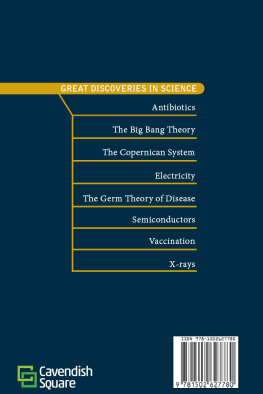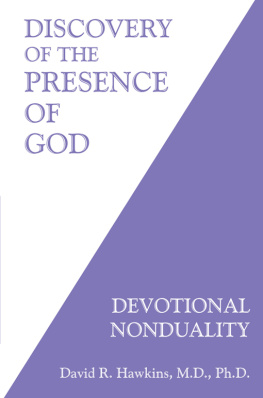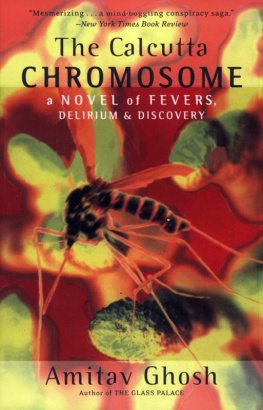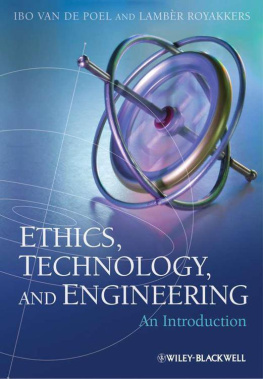W. David Lee - From X-rays to DNA: how engineering drives biology
Here you can read online W. David Lee - From X-rays to DNA: how engineering drives biology full text of the book (entire story) in english for free. Download pdf and epub, get meaning, cover and reviews about this ebook. City: Cambridge;Mass, year: 2014;2013, publisher: The MIT Press, genre: Romance novel. Description of the work, (preface) as well as reviews are available. Best literature library LitArk.com created for fans of good reading and offers a wide selection of genres:
Romance novel
Science fiction
Adventure
Detective
Science
History
Home and family
Prose
Art
Politics
Computer
Non-fiction
Religion
Business
Children
Humor
Choose a favorite category and find really read worthwhile books. Enjoy immersion in the world of imagination, feel the emotions of the characters or learn something new for yourself, make an fascinating discovery.
- Book:From X-rays to DNA: how engineering drives biology
- Author:
- Publisher:The MIT Press
- Genre:
- Year:2014;2013
- City:Cambridge;Mass
- Rating:3 / 5
- Favourites:Add to favourites
- Your mark:
- 60
- 1
- 2
- 3
- 4
- 5
From X-rays to DNA: how engineering drives biology: summary, description and annotation
We offer to read an annotation, description, summary or preface (depends on what the author of the book "From X-rays to DNA: how engineering drives biology" wrote himself). If you haven't found the necessary information about the book — write in the comments, we will try to find it.
An argument that technology accelerates biological discovery, with case studies ranging from chromosome discovery with early microscopes to how DNA replicates using radioisotope labels.
From X-rays to DNA: how engineering drives biology — read online for free the complete book (whole text) full work
Below is the text of the book, divided by pages. System saving the place of the last page read, allows you to conveniently read the book "From X-rays to DNA: how engineering drives biology" online for free, without having to search again every time where you left off. Put a bookmark, and you can go to the page where you finished reading at any time.
Font size:
Interval:
Bookmark:
Preface
Born in the 1940s, I was one of those inexhaustibly curious children who built a laboratory in the basement of his house in Detroit. Complete with natural gas Bunsen burners, stocked with nitric and sulfuric acid and magnesium ribbon, I experimented with real chemistry. One very cold winter day, after filling the house with billows of chlorine gas (which forced the whole family to evacuate), my parents decided it was time for me to graduate to electronics and motors. My biggest accomplishment was building a motor that powered nothing!
My first exposure to organized scientific development was in 1966, when I spent the first of several summers as an accelerator technician at the Lawrence Berkeley Radiation Laboratory, known then as the Rad Lab. It was invention and building experiments on a super grand scale and I was in my element there, surrounded by cyclotrons and other magnificent gadgets. In 1969, after graduating from MIT, I was hired by Arthur D. Little (ADL), a large, prestigious, technology-based consulting firm, where I was ultimately in charge of the technology and product development business. During my 25-year tenure there, we built from scratch nearly everything we worked on (cryogenics, combustion, appliances, space hardware, etc.). A principal investigator at ADL (called a case leader) would begin a project with a lab containing only empty benches. He or she would then proceed to design and build the equipment that would be the basis of the teams research. At ADL, I learned how to conduct research from Dr. Robert Wilson, Dr. Joan Berkowitz, and Dr. Peter Glazer. Bob taught me how to think through the design of an experiment, constantly refining the understanding until it could be summarized on a single page or, better yet, a 3 5 card. Joan taught me the ins and outs of chemistry, which I seemed to have missed in my years at MIT. Peter Glazer showed me how to reach out beyond the obvious and conventional and have the courage to propose new technologies; then relentlessly pursue funding until you are able to build what you dream.
After losing my first wife to cancer in 2003, I made a career change from hardware development to cancer research. I had the good fortune to know Professor Tyler Jacks, the director of the MIT Center for Cancer Research (CCR). Taking a huge risk, Tyler invited me to meet others at CCR. I had further luck in that MIT was in the process of formulating the concept of integrating engineering and biology in an effort to address cancer at what is now the MIT Koch Institute for Integrative Cancer Research. In 2008, I was offered a role at CCR to help with the interface between biologists, engineers, and clinicians. As I was being introduced around CCR, I was struck by the uniformity of the different biology labs. Of course, at that point, I did not understand enough of the subtleties to see the differences. I could not help comparing my then simplified view of biological research with my exposure to research in high-energy physics and so forth, where the key research tools were always purposefully built by the team concurrent with the design and conduct of the research. This seemed like a dramatic difference, and I questioned its importance. I looked for case studies that explored the integration of engineering and biology in an effort to accelerate the discovery and found nothing. I chatted with my friend Dr. Jeffrey Drazen, the editor in chief of the New England Journal of Medicine, about his observations, and he encouraged me to do my own primary research. Simultaneously, Phillip A. Sharp was writing about the convergence of the life sciences, physical sciences, and engineering. Conversations with him helped shape the theme of the book, and I was off and running.
Acknowledgments
It has taken many years, many minds, and much encouragement to get here.
From the very beginning of this project, I have had the unwavering support of Dr. Jeffrey Drazen (editor in chief of the New England Journal of Medicine) and two MIT Institute professors: Dr. Phillip A. Sharp and Dr. Robert S. Langer. The three brought such unique perspectives that I decided to include interviews with them in the book. I can say without hesitation that without Jeff and Phils encouragement and time-consuming involvement over the past 3 years, I would not have completed the effort.
Unlike typical acknowledgments of wives who suffer the months and, in this case, years of neglect while the writer writes, my wife, Eve Youngerman, had the foresight and wisdom to choose to become an integral part of the effort and write a large part of one chapter. Eve was a consistent and reliable cheerleader. She was assisted in her research by our daughter, Ruthie Lewis, an undergraduate studying biochemistry.
After the initial draft, I worked with James Buchanan (Orchard Writing) on the structure, flow, and content of the book. James made big contributions throughout the book helping to craft more readable pages and improving the flow of the ideas. James was also a good teammate for when it seemed as though the book would never be completed: He was a positive force.
Along the way I had the fortune of receiving insight regarding themes and approaches from Dr. Andrey Zarur, managing partner of Kodiak Ventures, as well as from Dr. Robert Urban, then the executive director of the MIT Koch Institute and now at Johnson & Johnson. Andrey could in a matter of minutes picture the entire subject and suggest important thematic changes. I always value Andreys suggestions. At the first complete draft, I enlisted my brother Kevin Lee, an attorney, to read the entire document. I have leaned on Kevin my entire life starting back on the playgrounds in Detroit so it seemed like a logical thing to do. I wanted to see if someone outside of the medical community would be interested in the material. He was, and he then made important changes to the historical analysis. At the same time I got editorial comments from my longtime friend Terry Finn, also an attorney and outside of the medical community.
Once the draft was completed, I had the benefit of expertise from some talented people. Dr. Annetine Gelijns is the professor of health policy at the Icahn School of Medicine at Mount Sinai and a researcher and scholar on the subject of technologies in medicine. Annetine helped me correct some important logical errors and clarify my observations. I only regret not having started our collaboration earlier. Dr. Nadya Dimitrova, a postdoctoral student in the Jacks Labs at MIT, poured through the entire book, ensuring that the biology discussions were correct and consistent. Nadya did a remarkably thorough edit, which surprised me by the sheer number of corrections. Robert Lewis, my son and a Ph.D. candidate, also made suggestions and edits to improve the book.
While my two daughters, Katie and Merritt, did not research or write anything, their beaming smiles when I talked about my research findings for the book were a constant inspiration. My other son, Jamie, and my two sons-in-law, Jeff Fishbone and Kevin Garofalo, listened patiently as I droned on about my epiphanies. The biggest thanks, however, must go to my parents, Barney and Mary Lee. Their support of my insatiable childhood curiosity, encouragement of my early scientific explorations, and unconditional belief in my abilities have allowed me to achieve the successes in my life.
An Opportunity for Greater Discovery
For many in the developed world, the word tuberculosis conjures an image of a long-vanquished infectious disease akin perhaps to polio or smallpox. Tuberculosis is a disease that is beyond the memory of most, but it is a term loaded with potent symbols of its past virulence: sickened patients coughing up bloody sputum in sanatoriums.
The suffering caused by tuberculosis has vanished in the modern age, as have the many sanatoriums (isolated facilities for tuberculosis patients), which have been converted to historical landmarks or dedicated to other uses. To people in the United States and other developed nations, the fear produced by the threat of tuberculosis epidemics is a piece of historical ephemera.
Next pageFont size:
Interval:
Bookmark:
Similar books «From X-rays to DNA: how engineering drives biology»
Look at similar books to From X-rays to DNA: how engineering drives biology. We have selected literature similar in name and meaning in the hope of providing readers with more options to find new, interesting, not yet read works.
Discussion, reviews of the book From X-rays to DNA: how engineering drives biology and just readers' own opinions. Leave your comments, write what you think about the work, its meaning or the main characters. Specify what exactly you liked and what you didn't like, and why you think so.







